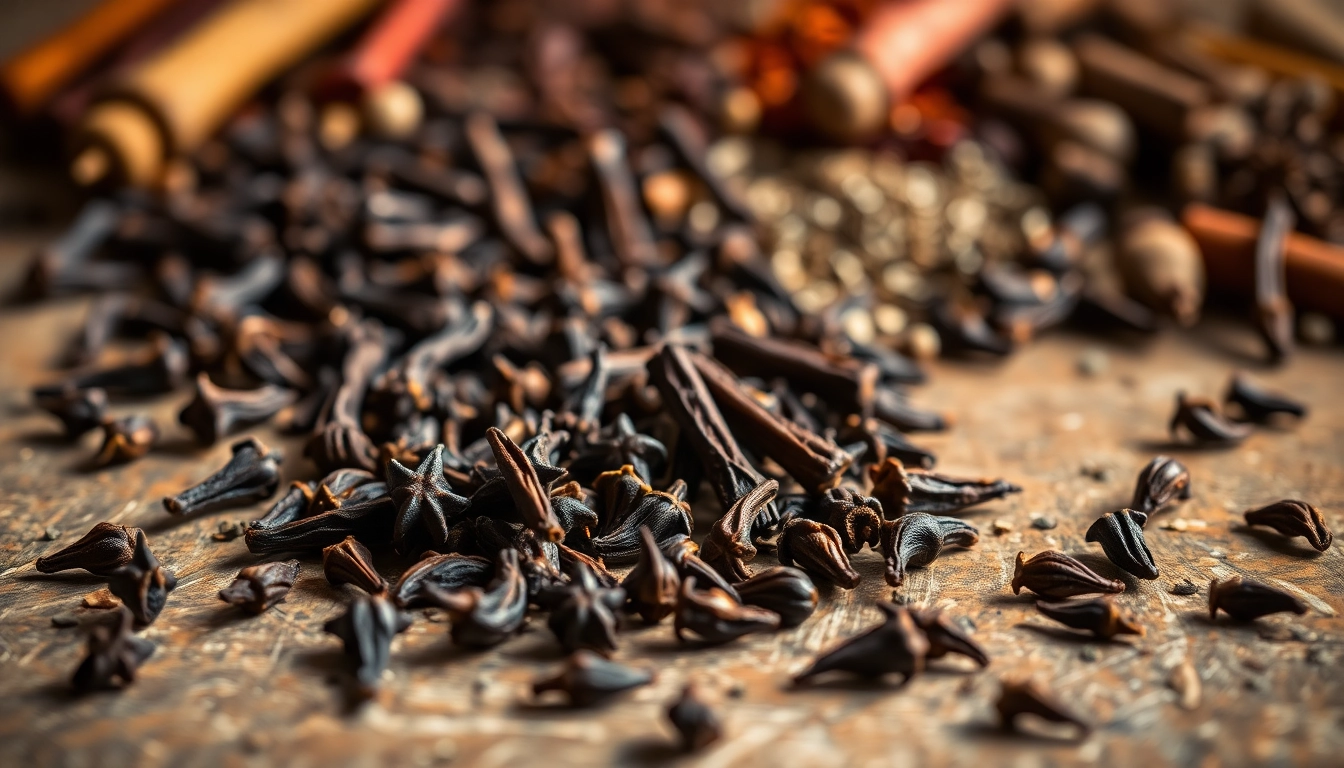Understanding Cinnamon Bark: Types and Characteristics
What is Cinnamon Bark?
Cinnamon bark is derived from the inner bark of trees belonging to the genus Cinnamomum. Known primarily for its warm, sweet flavor, cinnamon has been celebrated not only as a culinary spice but also for its extensive array of health benefits. This aromatic spice has a rich history dating back thousands of years, used in various cultures for both medicinal purposes and as a flavor enhancer in food. The appeal of cinnamon extends beyond its taste; it contains essential oils and compounds that contribute to its distinctive fragrance and health-promoting properties.
Different Varieties of Cinnamon Bark
There are primarily two types of cinnamon bark: Ceylon cinnamon (often referred to as “true cinnamon”) and Cassia cinnamon. Ceylon cinnamon is primarily grown in Sri Lanka and is favored for its delicate flavor and aroma. On the other hand, Cassia cinnamon, commonly found in North America and throughout China, has a stronger, more pungent taste, often characterized by a slightly bitter aftertaste.
Understanding these differences is key to selecting the right type of cinnamon for your culinary or health needs. For instance, while Cassia is more common and affordable, it contains higher levels of coumarin, a compound that can be harmful in excessive amounts. Therefore, those seeking a safer option, especially for health reasons, might prefer Ceylon cinnamon.
Identifying Quality Cinnamon Bark
When sourcing cinnamon bark, quality is paramount. Authentic Ceylon cinnamon is typically more expensive and has a finer texture, with a light-brown color and a subtle, sweet aroma. In contrast, Cassia cinnamon is darker and has a more robust scent. Quality can also be determined by examining the physical characteristics of the bark—it should be rolled up in tube-like shapes, unlike the thick and rigid pieces often found in Cassia.
Purchasing from reputable sources, such as Cinnamon Bark suppliers, can also ensure you receive high-quality product. Staying informed about certifications and sourcing practices can help consumers make more knowledgeable purchases, ensuring they get the maximum benefits from this precious spice.
Health Benefits of Cinnamon Bark
Nutritional Profile of Cinnamon Bark
Cinnamon bark is not just a flavorful spice; it also boasts an impressive nutritional profile. It is rich in antioxidants, anti-inflammatory compounds, vitamins, and essential minerals. For instance, a teaspoon of ground cinnamon provides moderate amounts of calcium, iron, and manganese, which are vital for maintaining good health. Beyond essential nutrients, cinnamon also contains bioactive compounds like cinnamaldehyde, which contribute to its medicinal properties.
Cinnamon Bark and Antioxidant Properties
One of the standout features of cinnamon bark is its significant antioxidant capacity. Antioxidants are essential for combating oxidative stress in the body, which can lead to chronic diseases including heart disease, diabetes, and cancer. Cinnamon has been shown to contain polyphenols and flavonoids that neutralize free radicals, thus protecting cells from damage. Regular consumption of cinnamon might also promote overall wellness by supporting immune function and reducing inflammation.
Potential Health Benefits: A Deeper Dive
Research has unveiled various potential health benefits of cinnamon bark, making it a popular ingredient in both dietary and therapeutic contexts. Some studies suggest that cinnamon may help lower blood sugar levels in people with diabetes by enhancing insulin sensitivity. Additionally, its antimicrobial properties can contribute to oral health and digestion.
Moreover, ongoing research into the anti-inflammatory effects of cinnamon indicates its potential role in improving heart health by reducing cholesterol levels. Another intriguing area of study is cinnamon’s cognitive benefits, which hints at its ability to enhance memory and learning capabilities. However, while these studies are promising, it is crucial for consumers to consult healthcare professionals before using cinnamon as a supplement or treatment.
Cooking with Cinnamon Bark
How to Incorporate Cinnamon Bark in Recipes
Cinnamon bark adds a delightful warmth and complexity to both sweet and savory dishes. To incorporate cinnamon bark into your recipes, one common method is to steep whole sticks in liquids such as milk, broth, or sauces to infuse flavor gradually. For baked treats like cookies, cakes, and pies, ground cinnamon can provide a more even distribution of flavor throughout the batter. Additionally, to maximize its potential, pair cinnamon with complimentary spices like nutmeg or cloves for a more aromatic result.
Best Pairings with Cinnamon Bark
Cinnamon pairs beautifully with a variety of ingredients. Its flavor profile complements sweet ingredients like apples, pears, and chocolate, making it a natural choice for desserts and pastries. Additionally, in savory dishes, cinnamon works well with meats such as lamb, beef, and chicken, enhancing flavors and adding warmth to stews and curries. For beverage lovers, cinnamon bark can enhance hot drinks such as coffee, chai, and hot chocolate, providing a cozy, aromatic experience.
Classic Dishes Featuring Cinnamon Bark
Several classic dishes authentically showcase the beautiful flavor of cinnamon bark. For example, middle eastern dishes often utilize cinnamon in savory recipes, such as Moroccan tagines featuring lamb or chicken with dried fruits and spices. In American cuisine, cinnamon is a staple in pumpkin pie and various breakfast dishes like oatmeal and pancakes. Furthermore, regional specialties may include warm spiced beverages such as mulled wine or cider, which use cinnamon to elevate their aromatic profiles.
Cinnamon Bark in Traditional Medicine
Historical Uses of Cinnamon Bark in Ayurveda
Cinnamon bark has been used for centuries in traditional medicine systems, particularly in Ayurveda. In Ayurvedic practices, cinnamon is valued for its warming properties and is believed to stimulate digestion and circulation. Recipes for Ayurvedic tonics often incorporate cinnamon alongside other spices like ginger and turmeric to enhance their nutritional benefits and therapeutic effects. It is also used in various forms—whether as a spice, an infusion, or essential oil—for its potential roles in balancing bodily doshas.
Modern Applications of Cinnamon Bark in Herbal Remedies
In contemporary herbal remedies, cinnamon bark is utilized for various health concerns. Its anti-inflammatory and antimicrobial properties have made it a popular component in natural supplements targeting digestion and immune support. Herbalists may recommend cinnamon-infused teas or tinctures to help alleviate cold symptoms or improve gastrointestinal health. Nevertheless, users are advised to conduct thorough research and consider professional guidance to ensure safe use in herbal practices.
Safety and Precautions When Using Cinnamon Bark
While cinnamon bark is generally safe for consumption, it is essential to be mindful of its dosage, particularly with Cassia cinnamon. Due to the higher coumarin content, excessive use of Cassia can lead to harmful health risks. Ceylon cinnamon is preferred for long-term use due to its lower coumarin levels. Pregnant women, nursing mothers, and individuals with certain medical conditions should consult healthcare providers before incorporating significant amounts of cinnamon into their diets, especially as a supplement.
Sourcing and Storing Cinnamon Bark
How to Source Quality Cinnamon Bark Online
When purchasing cinnamon bark, sourcing high-quality products is essential for both culinary use and health benefits. Look for reputable online retailers that provide detailed information about their products, including origin, processing methods, and certifications. Reading customer reviews and ratings can also provide insights into the quality of cinnamon being offered. Whenever possible, opt for organic varieties that support sustainable farming practices.
Best Practices for Storing Cinnamon Bark
Proper storage of cinnamon bark helps retain its flavor and potency. Whole cinnamon sticks should be kept in an airtight container, away from light, heat, and moisture to minimize deterioration. Ground cinnamon, due to its larger surface area, can lose flavor more quickly and should also be stored in a sealed jar in a cool, dark place. For prolonged freshness, consider refrigerating ground cinnamon, but allow it to reach room temperature before use to avoid moisture condensation.
How Long Does Cinnamon Bark Last?
The shelf life of cinnamon bark varies based on its form. Whole cinnamon sticks can last for about three to five years when stored properly, while ground cinnamon typically maintains its best flavor for one to two years. It’s advisable to conduct routine checks for scent and flavor intensity, discarding any product that shows signs of loss of potency. Proper storage, along with mindful purchasing, ensures that your cinnamon retains its rich flavor and health benefits throughout its use.



